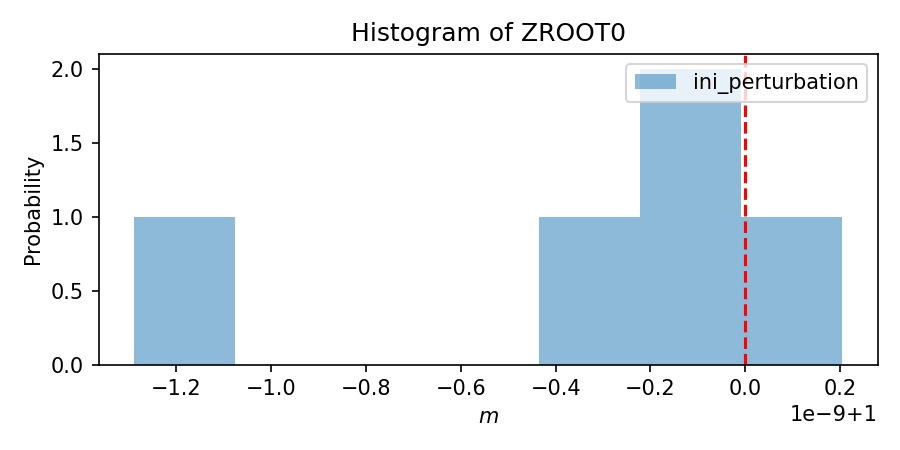Note
Go to the end to download the full example code.
Read SMC sensors observations to assimilate#
The notebook illustrate how to read SMC sensors dataset to be prepare for DA
Estimated time to run the notebook = 2min
import numpy as np
from pyCATHY.DA.cathy_DA import DA
from pyCATHY.DA.observations import make_data_cov
from pyCATHY.DA.cathy_DA import DA, dictObs_2pd
from pyCATHY.DA import perturbate
import pickle
simuWithDA = DA(
dirName='./DA_with_swc',
prj_name='DA_SMC',
notebook=True,
)
🏁 Initiate CATHY object
abs_data_err = 1e-1 # constant error does not vary with time
dict_obs = {} # initiate the dictionnary
with open('./DA_with_swc/obs_prepared_SMC.pkl', 'rb') as fp:
dict_obs = pickle.load(fp)
data_measure_df = dictObs_2pd(dict_obs)
# data_measure_df.index
By default, there is no correlation between sensors Therefore, the covariance matrices are diagonal with the error values on the diagonals
_,_, stacked_data_cov = make_data_cov(
simuWithDA,
dict_obs,
list_assimilated_obs = 'all',
)
print(np.shape(stacked_data_cov))
simuWithDA.stacked_data_cov = stacked_data_cov
# print(np.shape(simuWithDA.stacked_data_cov))
(49, 3, 3)
DEM, _ = simuWithDA.read_inputs('dem')
simuWithDA.DEM = DEM
simuWithDA.update_dem_parameters()
simuWithDA.update_veg_map()
simuWithDA.update_soil()
NENS = 5
# ZROOT
# -------------------
pert_nom_ZROOT = 1
pert_sigma_ZROOT = 0.35e-9
minZROOT = 0
maxZROOT = 2
scenario = {'per_type': [None],
'per_name':['ZROOT'],
'per_nom':[pert_nom_ZROOT],
'per_mean':[pert_nom_ZROOT],
'per_sigma': [pert_sigma_ZROOT],
'per_bounds': [
{'min':minZROOT,'max':maxZROOT}
],
'sampling_type': ['normal'],
'transf_type':[None],
'listUpdateParm': ['St. var.', 'ZROOT'],
'listObAss': ['SMC'],
}
scenario['per_name']
list_pert = perturbate.perturbate(simuWithDA,
scenario,
NENS
)
🔄 Update dem_parameters file
🔄 Update hap.in file
🔄 Update dem_parameters file
🔄 Update dem_parameters file
─────────────────────────────────────────────────────────────────────────────── ⚠ warning messages above ⚠ ───────────────────────────────────────────────────────────────────────────────
The parm dictionnary is empty
Falling back to defaults to update CATHYH
This can have consequences !!
──────────────────────────────────────────────────────────────────────────────────────────────────────────────────────────────────────────────────────────────────────────────────────────
🔄 Update parm file
🔄 Update soil
homogeneous soil
stop
import os
var_per_dict_stacked = {}
for dp in list_pert:
savefig = os.path.join(
simuWithDA.workdir,
simuWithDA.project_name,
simuWithDA.project_name + dp['savefig']
)
np.random.seed(1)
# need to call perturbate_var as many times as variable to perturbate
# return a dict merging all variable perturbate to parse into prepare_DA
var_per_dict_stacked = perturbate.perturbate_parm(
var_per_dict_stacked,
parm=dp,
type_parm = dp['type_parm'], # can also be VAN GENUCHTEN PARAMETERS
mean = dp['mean'],
sd = dp['sd'],
sampling_type = dp['sampling_type'],
ensemble_size = dp['ensemble_size'], # size of the ensemble
per_type= dp['per_type'],
savefig=savefig
)

f simuWithDA.parm simuWithDA.read_inputs(‘atmbc’)
atmbc_times = data_measure_df.index.get_level_values(1).unique().to_list()
simuWithDA.update_atmbc(HSPATM=1,IETO=0,
time=atmbc_times,
netValue=[0]*len(atmbc_times)
)
# simuWithDA.update_parm()
# simuWithDA.read_inputs('atmbc')
🔄 Update atmbc
🔄 Update parm file
simuWithDA.atmbc
# simuWithDA.run_DA_smooth(
# VTKF=2,
# TRAFLAG=0,
# dict_obs= dict_obs,
# list_assimilated_obs='all', # default
# list_parm2update= ['St. var.', 'ZROOT0'],
# DA_type='enkf_Evensen2009',
# dict_parm_pert=var_per_dict_stacked,
# )
# simuWithDA.run_DA_sequential(
# VTKF=2,
# TRAFLAG=0,
# dict_obs= dict_obs,
# list_assimilated_obs='all', # default
# list_parm2update= ['St. var.', 'ZROOT0'],
# DA_type='enkf_Evensen2009',
# dict_parm_pert=var_per_dict_stacked,
# )
Total running time of the script: (0 minutes 0.184 seconds)